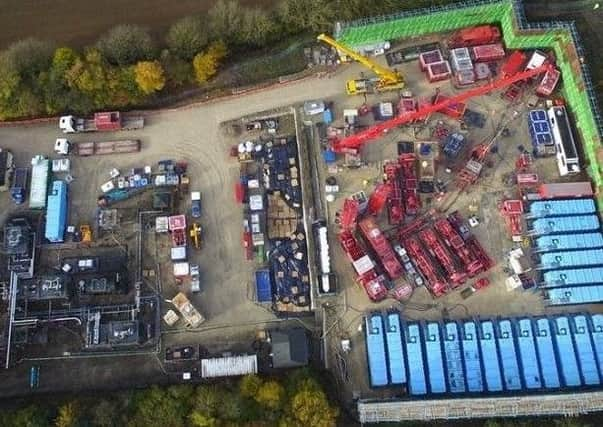Corin Taylor: Fracking is our chance to meet the need for gas


These are encouraging developments, but we face challenges too. Not just as an industry, but as a nation. As we begin 2018, the task at hand is more salient than ever: To meet our national demand for gas with our own UK homegrown supply, maximising both the economic and environmental opportunities that come with it.
With 84 per cent of us heating our homes with gas, gas producing nearly half of our electricity and UK industries using it as a vital feedstock, the question is not whether we need gas, but where we source it from. 2017 served to cement this; in December alone we saw three events cause a European gas shortage and subsequent price hike, as Middle Eastern and Russian suppliers scrambled their costly Liquefied Natural Gas (LNG) tankers to meet demand.
Advertisement
Hide AdAdvertisement
Hide AdBut the struggle for already-overstretched UK billpayers, who inevitably end up shouldering the cost, is not the only concern. Shipping our much-needed gas across oceans and continents as LNG requires energy in itself. The gas produced in Qatar must be super-cooled, then loaded, brought thousands of miles to the UK then unloaded and regassified, using an extraordinary amount of energy.
In turn, importing this gas rather than producing it here in the UK means 10 per cent higher lifecycle emissions for that supply, which given we now import around half our gas, has big implications for our environment, particularly as we take gas from nations with lower standards than our own.
Increasingly importing gas rather than producing it here onshore similarly means that the tax, employment and local investment benefits of UK homegrown production are not taken advantage of, instead handed to our suppliers overseas.
But we as an industry are working to change the tide. One of our members, Cuadrilla Resources, has invested nearly £5m directly into the Lancashire economy while creating over 50 new jobs. Third Energy’s Kirby Misperton site, which has called North Yorkshire home since 1984, is generating £100,000 under our community benefits scheme, allowing local residents to invest in a community project of their choice once final approval has been received.
Advertisement
Hide AdAdvertisement
Hide AdThis is greatly encouraging, and we are on track to see the first UK onshore hydraulically fractured gas serve UK consumers in 2018, whether through their heating or cooking, electricity, or through their use of plates, clothes, mobile phones or one of the many other products made using gas. But we are not naïve or complacent, and we know that there is more work to do to in proving the need for hydraulic fracturing onshore in the UK.
High volume hydraulic fracturing itself is not a new or novel technique. In our offshore industry it has been used to stimulate production in 18 of the last 19 gas wells drilled. A standard oilfield service employed across the world, and used in combination with horizontal wells, it allows us to maximise the amount of gas we get out of the ground whilst minimising disruption at surface level, requiring only a small patch of land to reach a lot of gas.
So where does the fracking debate go from here? We know we need gas, and that it is important to source it in the most beneficial way, both in terms of our environment and economy, but also our security of supply. The answer is simple, the onus is on us as an industry to convince those undecided on its merits that onshore gas production is the best opportunity we have to reliably meet our energy needs in a safe and affordable way.
While renewable sources are increasingly producing more of a share of our electricity, something we as an industry support, gas still provides nearly half, together with most of our heat for both homes and industry. All forecasts have gas in our energy mix for decades to come, a particularly crucial matter for heat, especially in winter when renewable production falls. We need a mix of energy technologies, and the debate has become too polarised. We need gas, and the debate comes down to a choice about where we get it.
Advertisement
Hide AdAdvertisement
Hide AdAs we move to flow testing and production in 2018, we forecast the fracking debate changing shape. Once we have proven that we can conduct hydraulic fracturing in a safe and accountable way, reducing our reliance on imports while meeting our national demand for gas, and bringing direct local investment, we hope that those still undecided on hydraulic fracturing will come to accept it for what it is: A standard oilfield service that will help support the UK’s energy independence, economy and environment.
Corin Taylor is director of UK Onshore Oil and Gas.